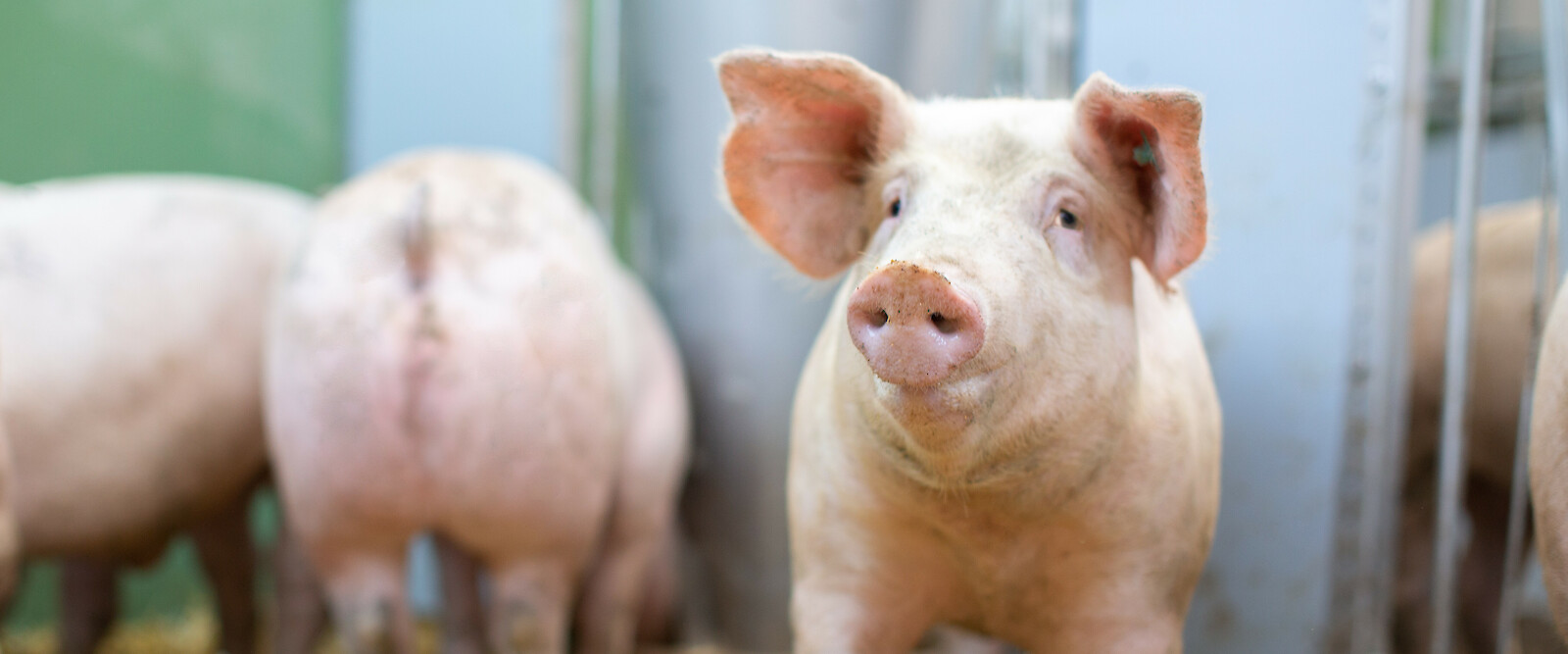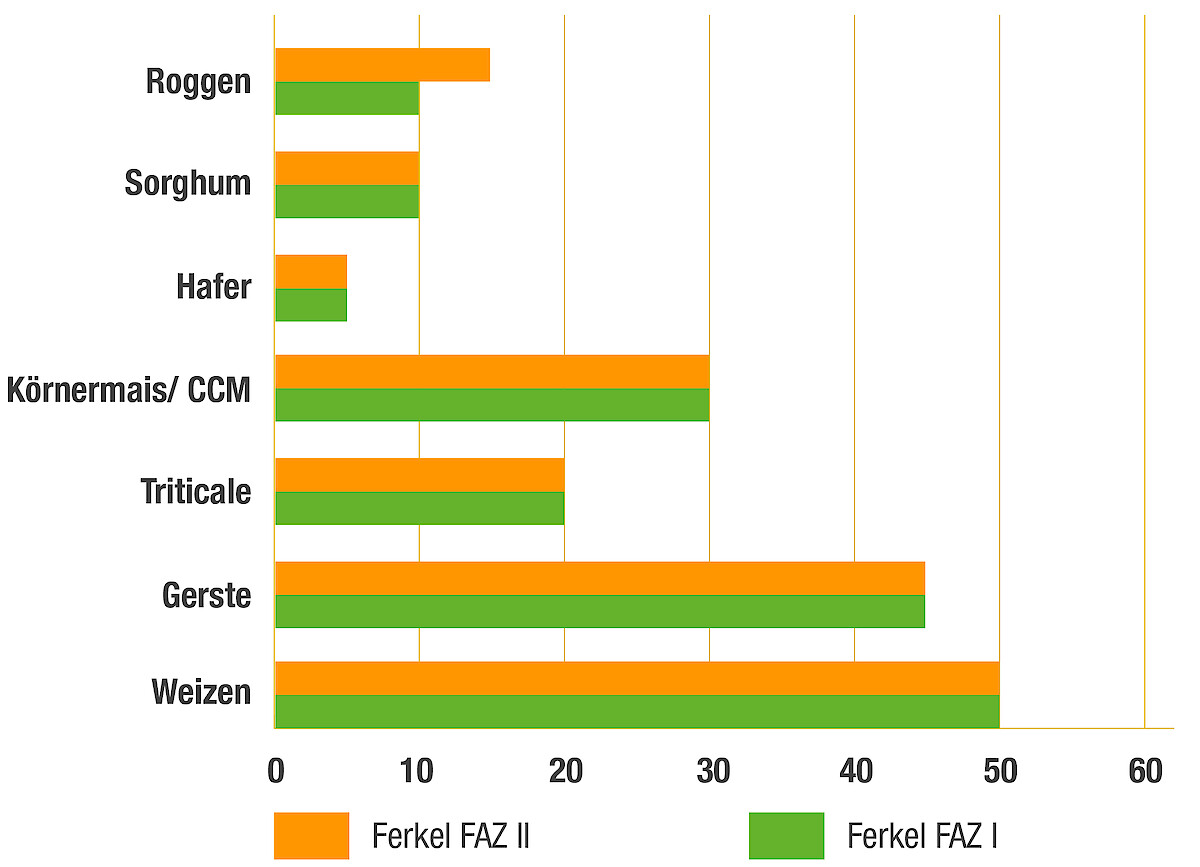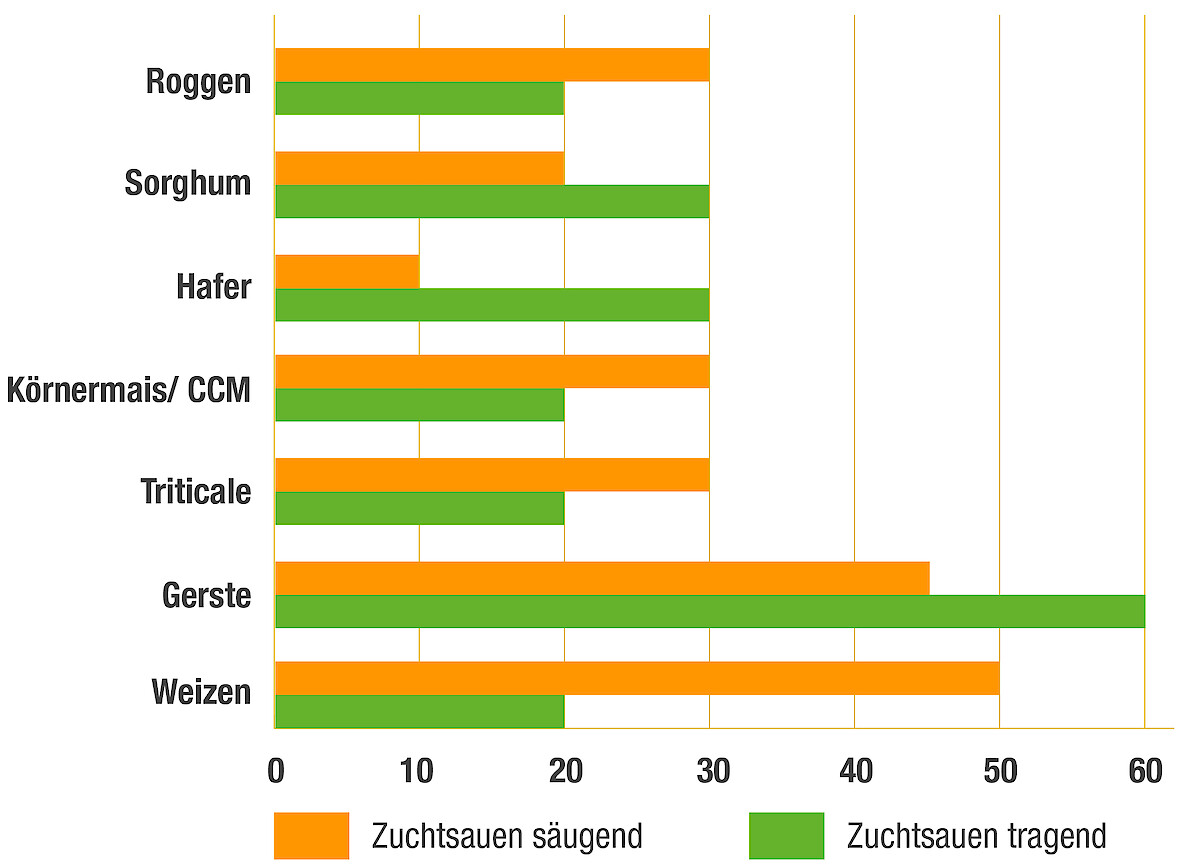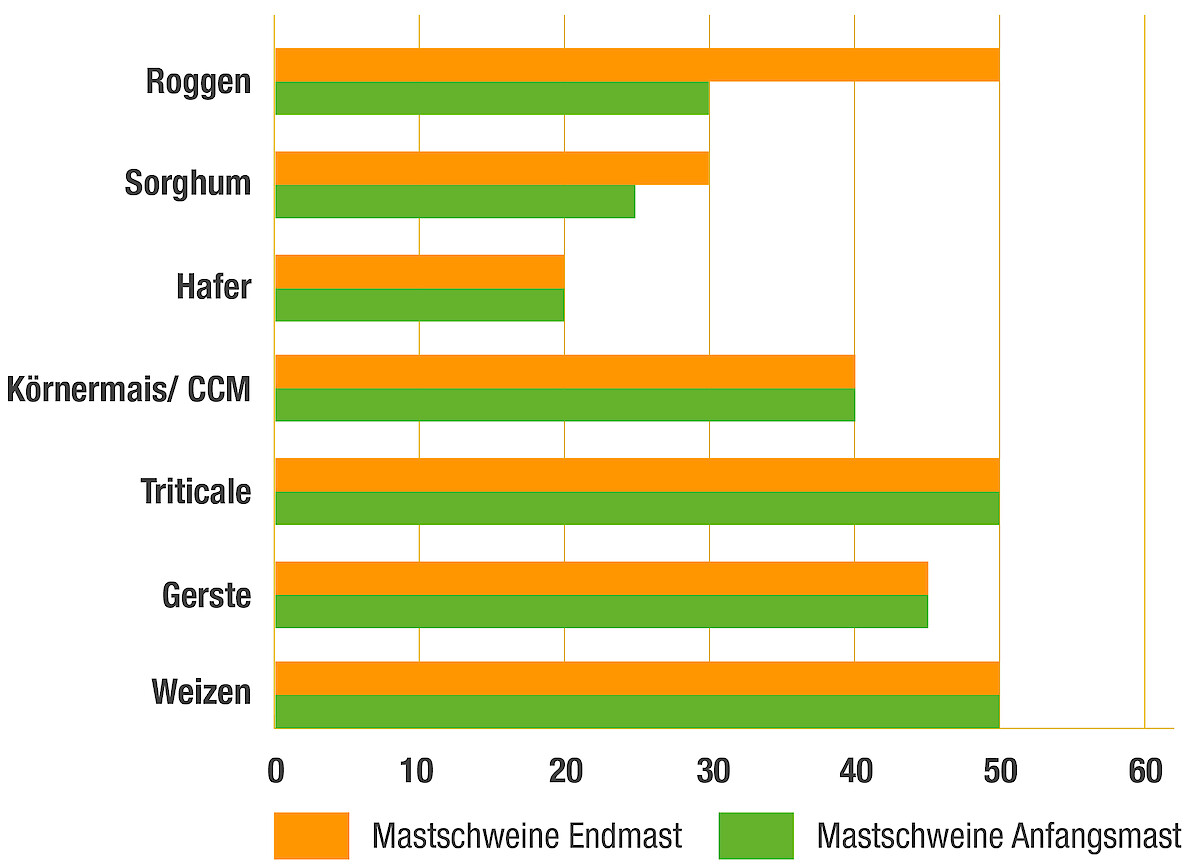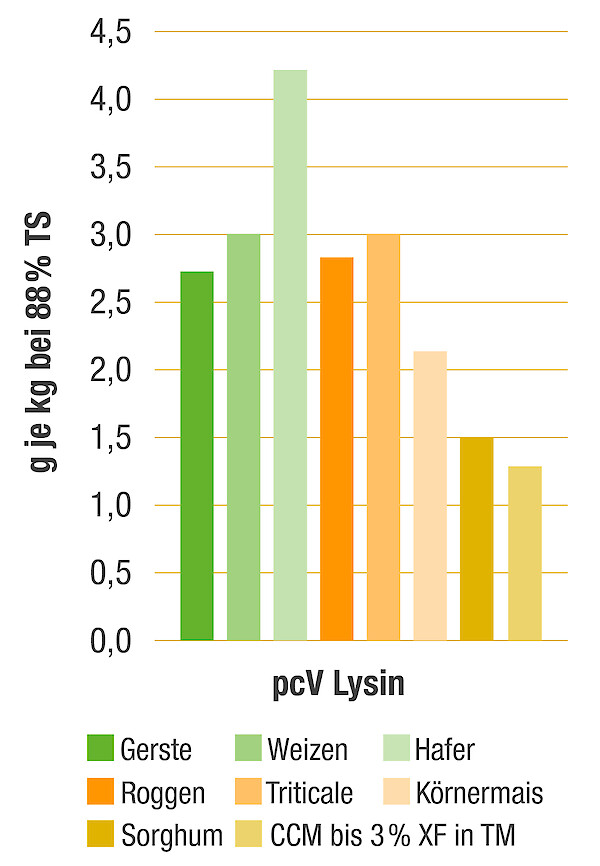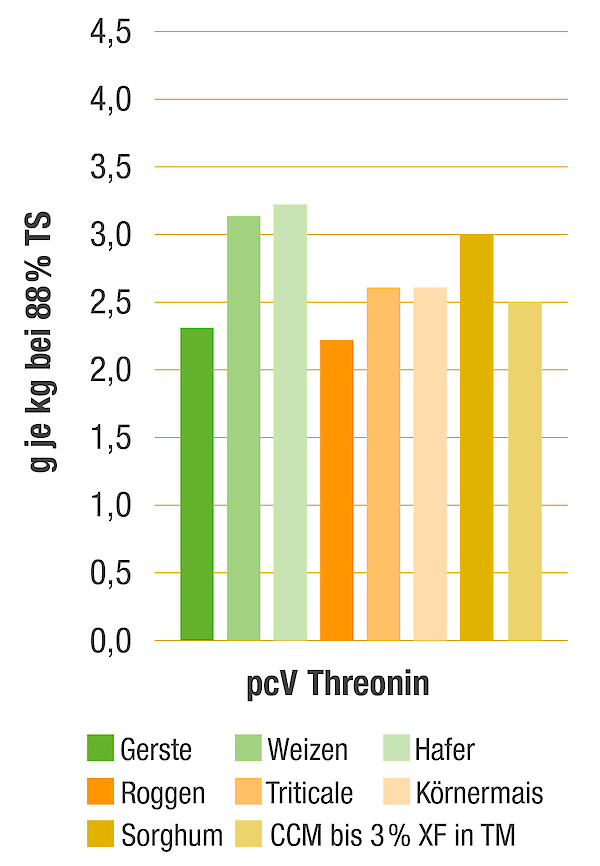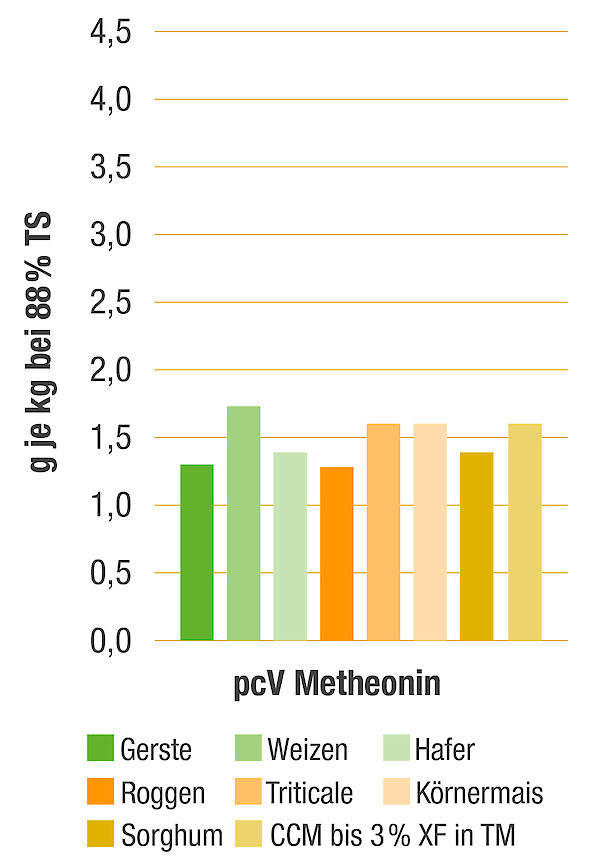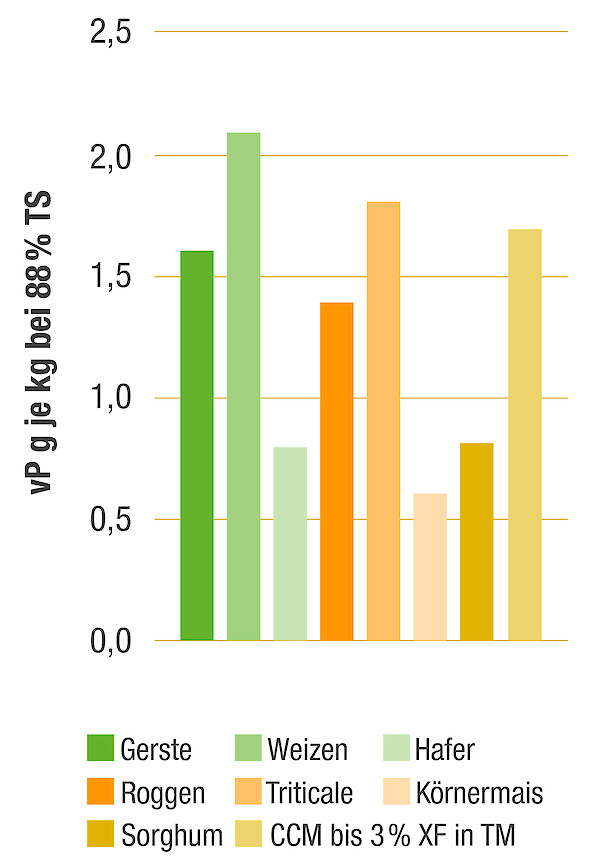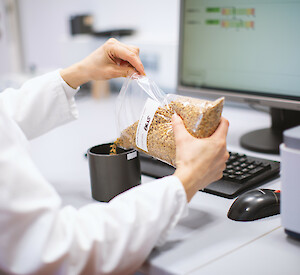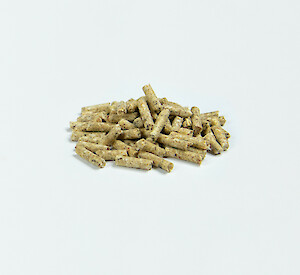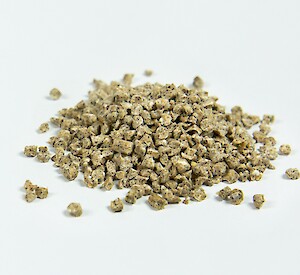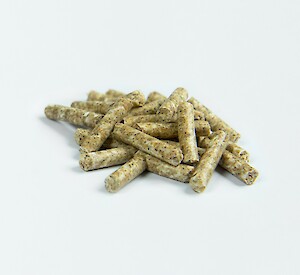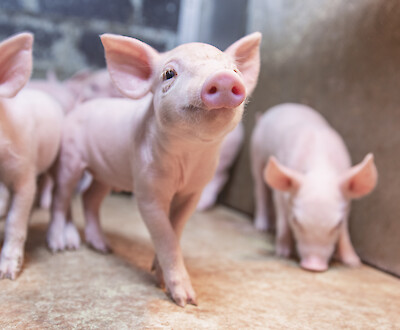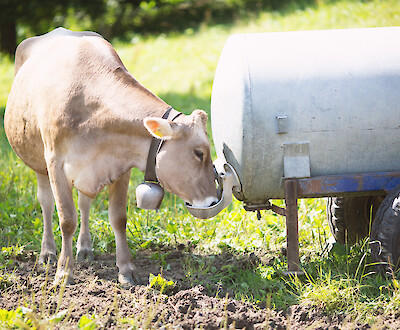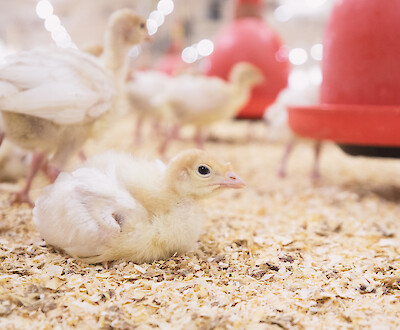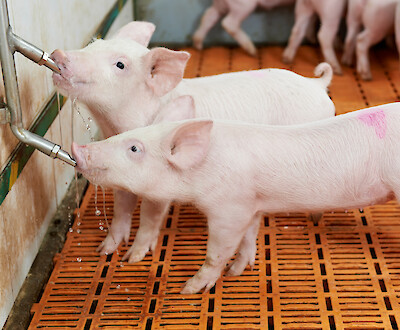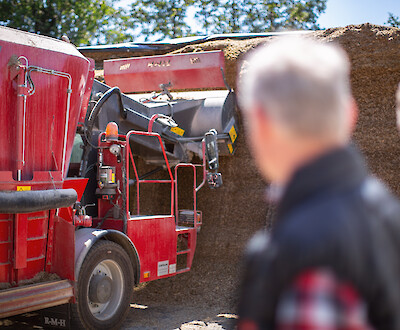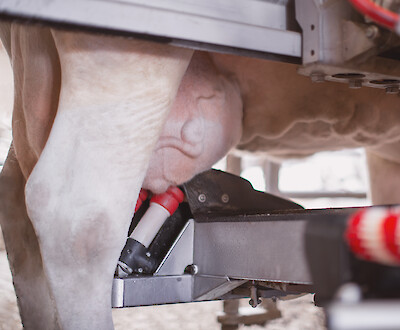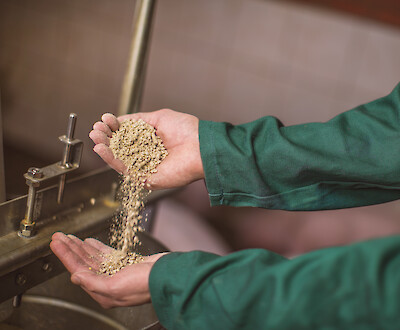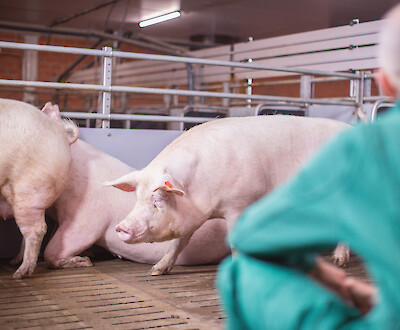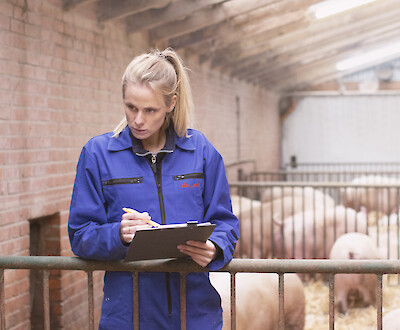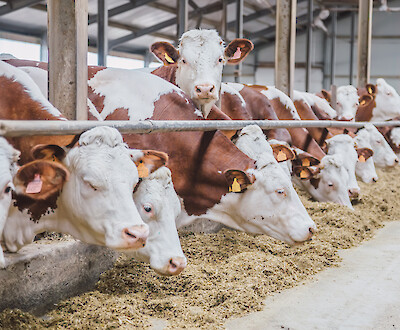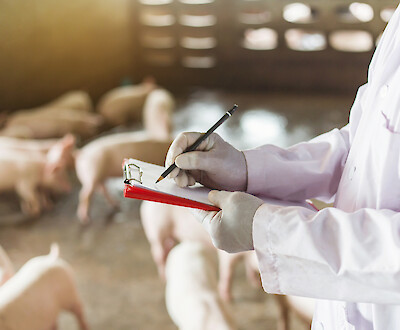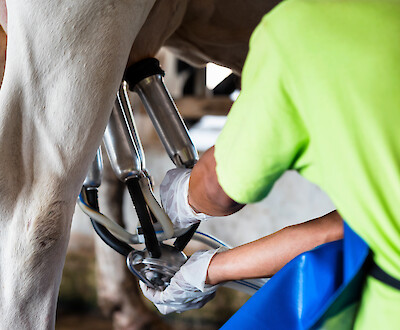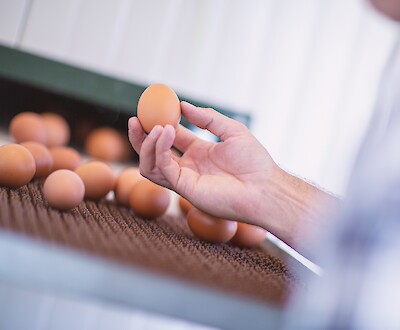Ration design in pig feeding
Cereal species as feed in pigs - What to consider?
Cereals are of great importance in pig feed. For self-mixers, the cultivation of different species is suitable. The individual types of grain are characterized by their different compositions. Accordingly, the possible applications in feed mixtures for piglets, sows and fattening pigs also vary. In order to optimize the farm's own rations, it is worth taking a detailed look at the different types of cereals, their nutritional values and ingredients.
Starch is the most important nutrient in cereals in terms of quantity and thus the basis of their high energy content. In pig feeding, however, the crude protein content is also important. The main reason for this is the high proportion of cereals in feed mixtures. Depending on the protein content and biological value of the cereal protein, different proportions of protein-rich feed supplements are required in the ration. Depending on the husk content of the various cereals, there is also a difference in the crude fiber content that the respective cereal brings to the finished mixture.
Most common cereals in pig feeding - an overview
The following list provides an overview of the nutrient profiles of the most important cereals used in pig feeding. The listing provides guidance for designing on-farm mixed rations.
The preferred use of wheat in pig feed is based on its high energy content and high digestibility. The high starch and protein contents of this husk-free cereal are the value-determining ingredients for feeding. Compared to other cereals, wheat has a high digestible phosphorus (vP) content. The reasons for this are its overall high phosphorus content and, on the other hand, the high plant phytase activity in the wheat grain. Together with triticale, wheat is the cereal with the highest crude protein content. However, due to the lower lysine content, the biological value of the cereal protein is poorer in wheat than in triticale.
As an energy-rich cereal with very high feed acceptance, wheat is ideal for feeding piglets, lactating sows and fattening pigs. Wheat may account for up to 50% of the feed ration. Due to its increased energy and protein content, the proportion of wheat in rations for pregnant sows should be limited. Its low crude fiber content can be compensated by using a crude fiber carrier (e.g. deuka Fasermix) or barley.
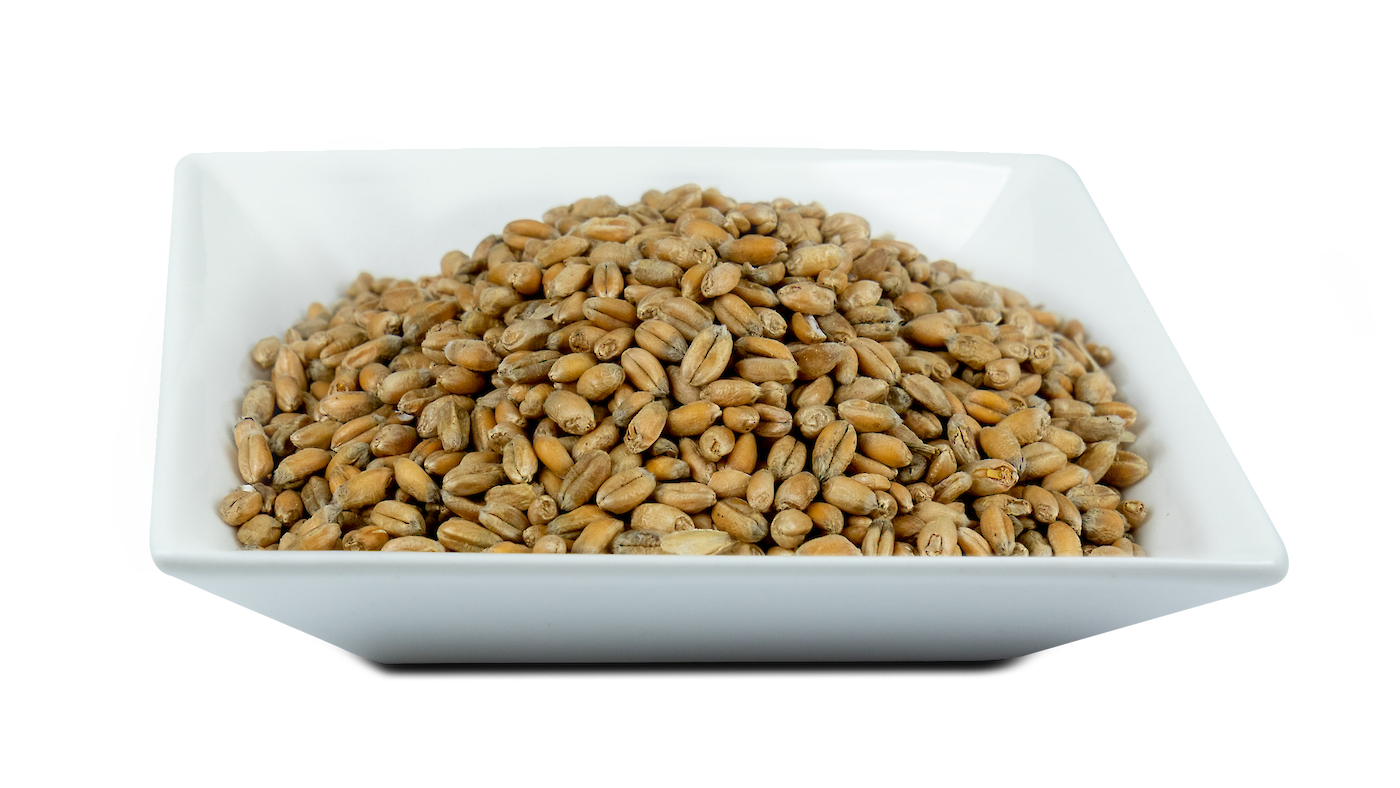
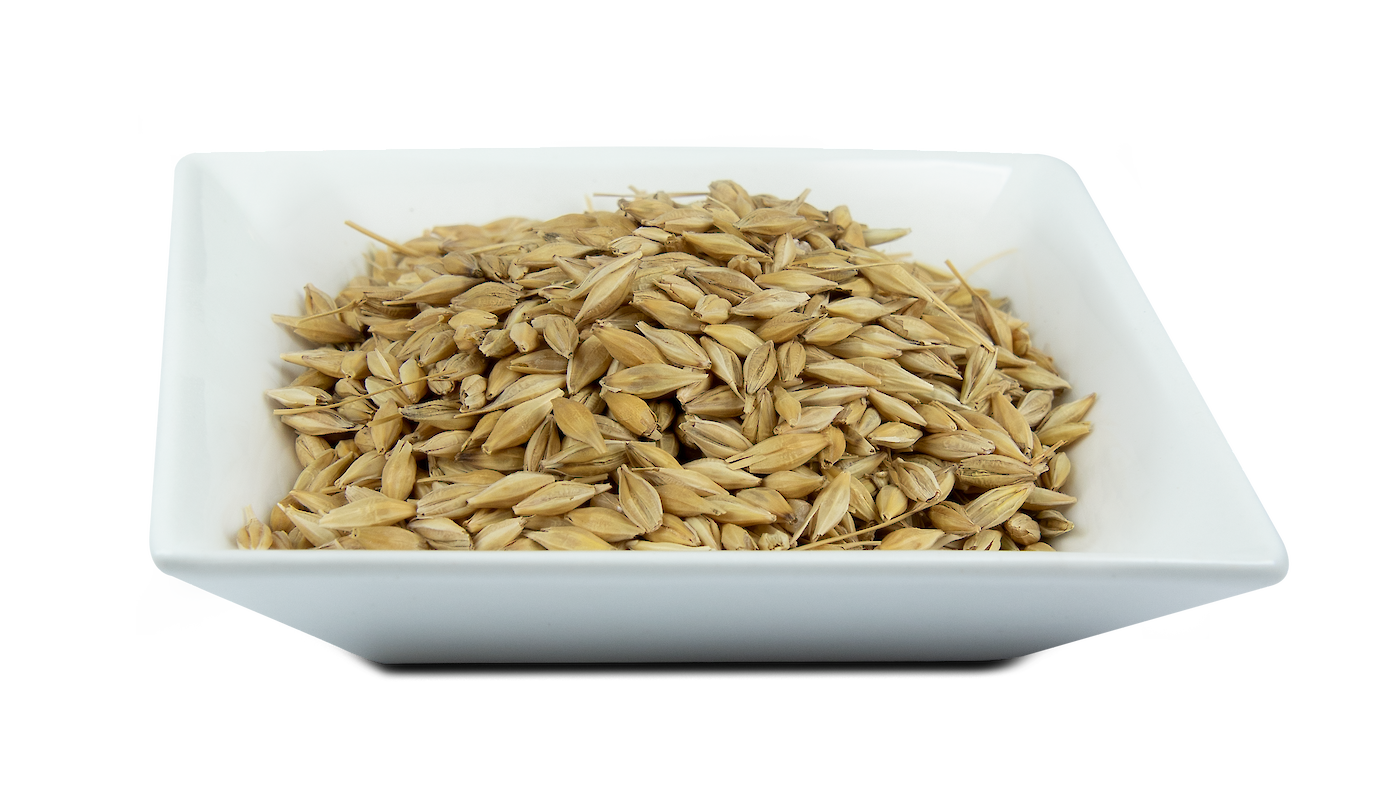
Compared to other cereals, barley has a lower energy content and high crude fiber content. The reason for this is that grain and husk are not separated during threshing. Barley thus occupies an intermediate position in terms of crude fiber content between the unhusked cereals (e.g. wheat, triticale, rye, corn) on the one hand and the heavily husked oats on the other. The multi-row winter forms are somewhat richer in crude fiber than the two-row winter and summer forms.
Barley also ranks in the middle in terms of crude protein content and small intestinal digestibility of amino acids. The cereal lies exactly between wheat and triticale. Due to the lower plant phytase activity compared to both cereals, barley has a lower amount of digestible phosphorus (vP).
Due to its dietary properties, barley is particularly suitable for feeding to fattening pigs. However, to counteract an excessive drop in energy content, limit its use to 30-45% of the total ration. Barley is also a suitable high-energy feed for sows. Higher ration proportions of up to 60% are possible when feeding pregnant sows.
In addition, the crude fiber contained in barley can help stabilize the digestive process of piglets. However, due to the reduced digestibility caused by the high crude fiber content, use restrictions are also essential in piglet feeding. In addition, the husk content causes further negative effects: For example, the sharp-edged husks can reduce feed intake and, in the worst case, lead to mucosal injuries in young pigs.
For a long time, rye was considered a "problem feed" and was rarely used in feed rations for pigs. This aversion was due to the soluble non-starch polysaccharides (NSP) contained in rye, as well as the fear of many farmers of ergot contamination (see info box). Modern rye varieties, however, contain far lower amounts of antinutritive substances that impair digestibility and are also less susceptible to ergot infestation.
As a husk-free cereal, rye is low in crude fiber and therefore has high digestibility. The low crude fiber content of rye can be compensated for by using a crude fiber carrier or including barley in the ration. The cereal also has a low crude protein content - only corn contains even less. In terms of the biological value of the crude protein, rye takes a leading position. The reason for this is the high lysine content.
Rye has the highest plant phytase activity. The native phosphorus content, on the other hand, is more in the middle range, thus limiting the amount of digestible phosphorus (vP). The combination of low crude protein content, high phytase activity. biologically valuable amino acid pattern, and moderate phosphorus content makes rye excellent for nitrogen (N)- and phosphorus (P)-reduced feeding.
Because of its NSP content, farm managers should limit the use of rye in piglets. Higher levels of rye are possible in rations for finishing pigs. It is recommended to integrate small amounts of rye in the upstream feeding phase in order to accustom the animals to the taste.
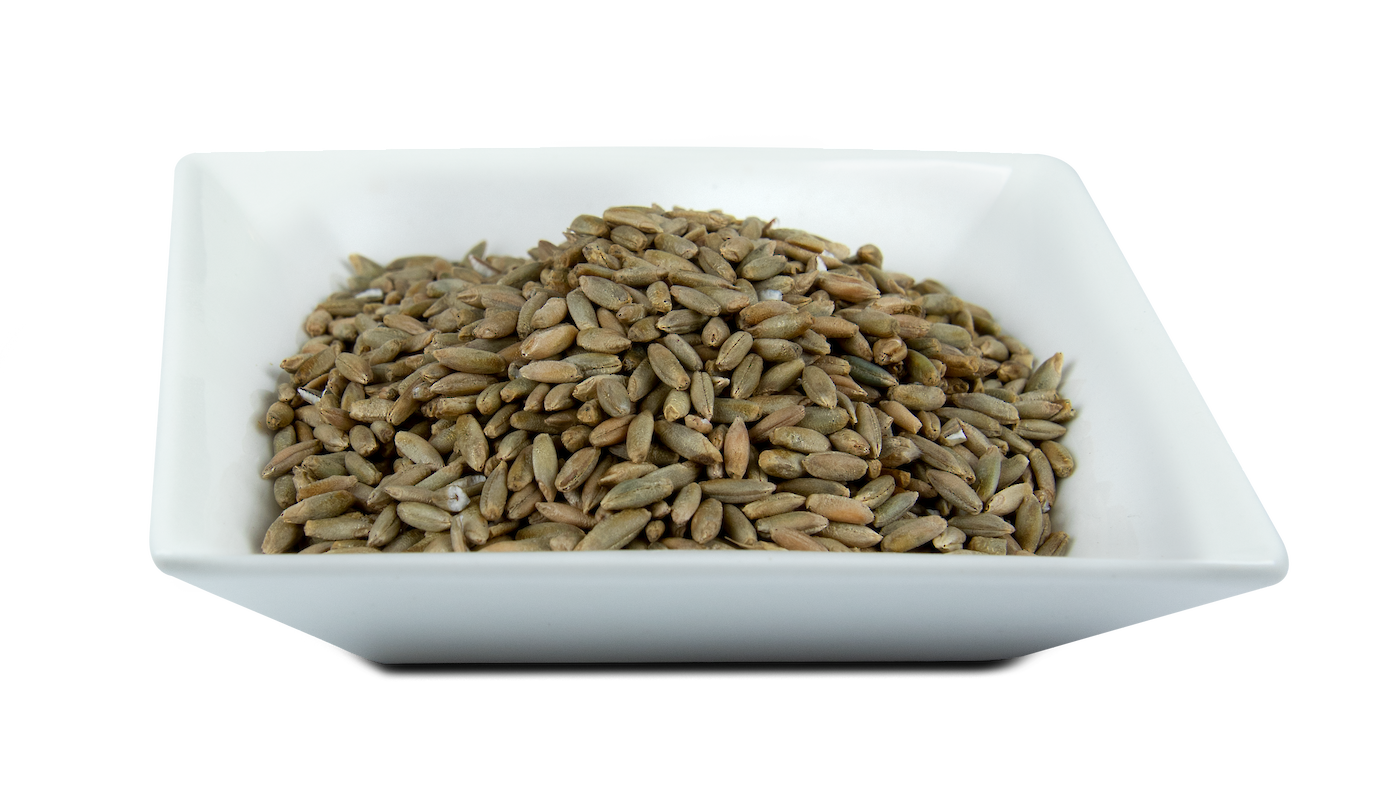
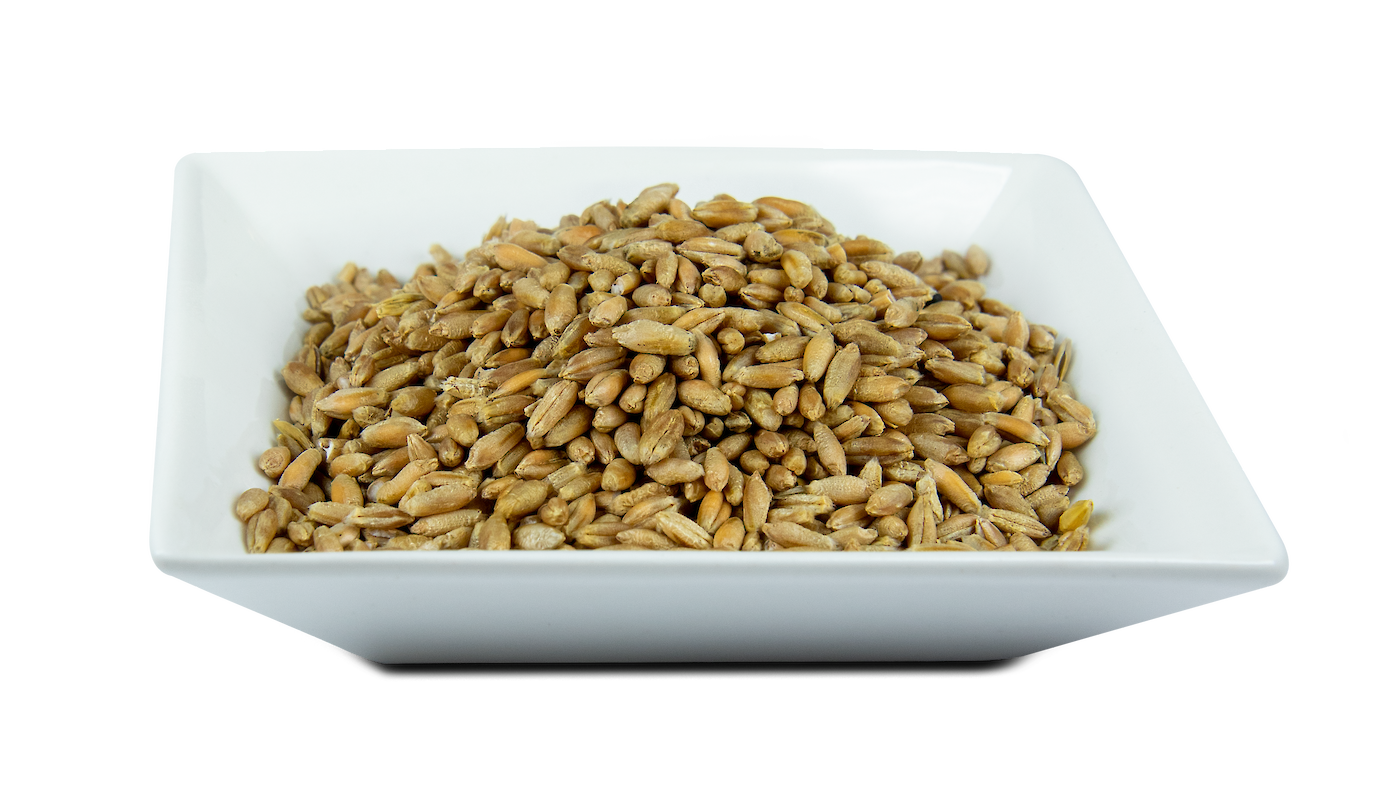
The form and diversity of triticale are considerable. However, the diversity in which the forage plant occurs in nature results in a high variance of the ingredients. This does not always make it easy for farmers to integrate triticale into their rations. As a husk-free cereal, triticale - like rye and wheat - is low in crude fiber and highly digestible. Therefore, it is recommended to always use triticale together with a fiber carrier or a cereal rich in crude fiber.
Triticale and wheat are the cereals richest in crude protein. However, due to its higher lysine content, the cross between wheat and rye has a higher biological value than wheat. The digestible phosphorus (vP) content is high overall compared with other cereals and lies roughly between that of wheat and barley. The main reason for this is the high plant phytase activity in the grain.
Compared to rye, triticale contains less non-starch polysaccharides (NSP). However, NSP content sometimes varies significantly due to the diversity of triticale varieties. Similar to rye, pig farmers should therefore limit the ration proportions in young animals. Due to the good feed acceptance of triticale, similar ration proportions as for wheat are possible in pig fattening.
Compared with other cereals, oats are low in energy. The reason for this is the husk, which is rich in crude fiber and accounts for about a quarter of the grain. The tegument-rich oats are the richest in crude fiber of all domestic cereals. In addition, oats have the highest fat content. The lipid fraction of the grain consists mainly of unsaturated and essential fatty acids (farm managers must therefore take the high perishability into account in storage and ration design). Also, too high an intake of unsaturated fatty acids can negatively affect the fat quality of the carcass. This limits the use of oats in pig fattening.
The low crude protein content of oats is only undercut by corn and sorghum. The digestibility of phosphorus from oats is limited by the scarcity of the plant's own phytase activity.
Finally, oats have a higher content of vitamin E and antioxidants. Because of this, it is considered to have favorable properties especially in young animal rearing and when fed to breeding animals. However, the low energy and crude protein content and poor digestibility limit the use of this cereal in piglet rearing, pig fattening and in rations for lactating sows. The increased crude fiber content allows larger proportions in rations for pregnant sows.
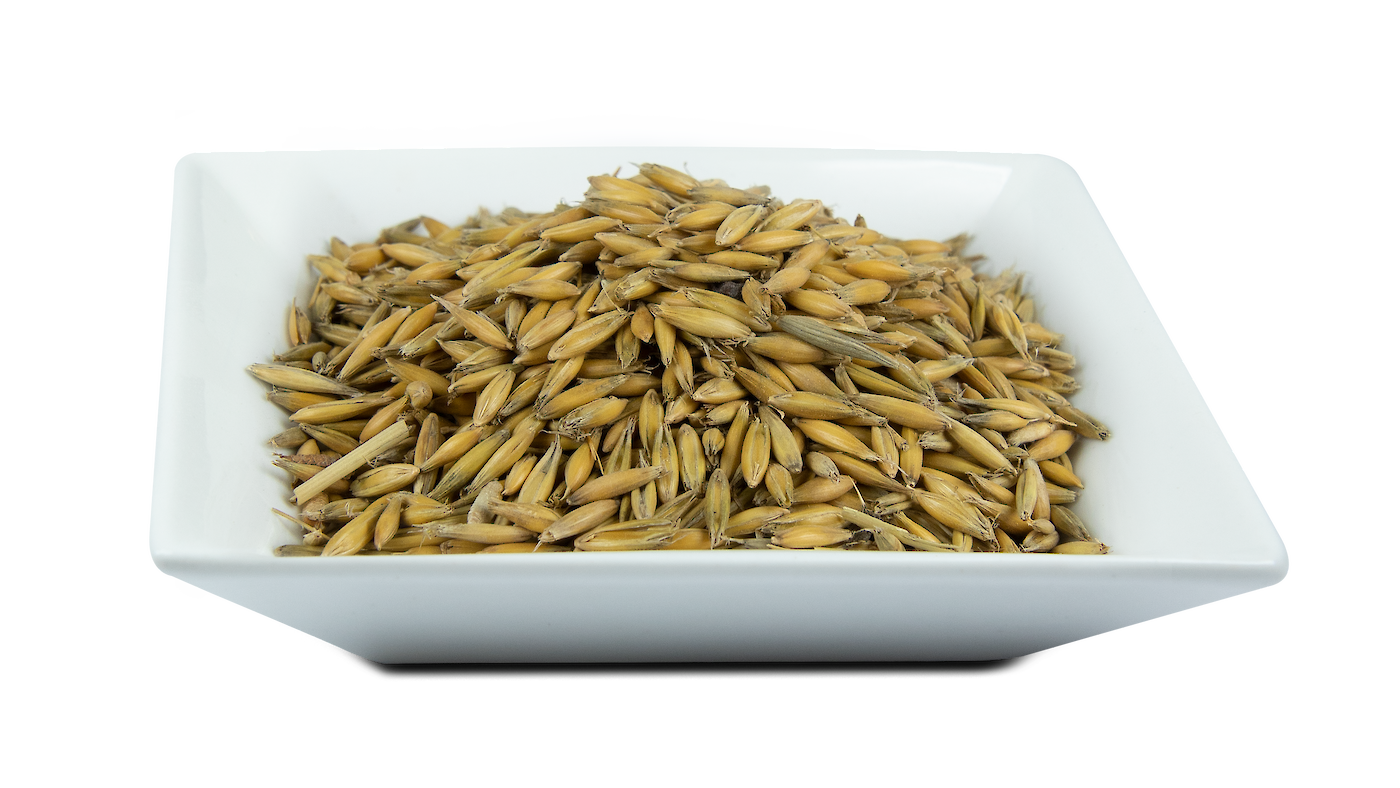
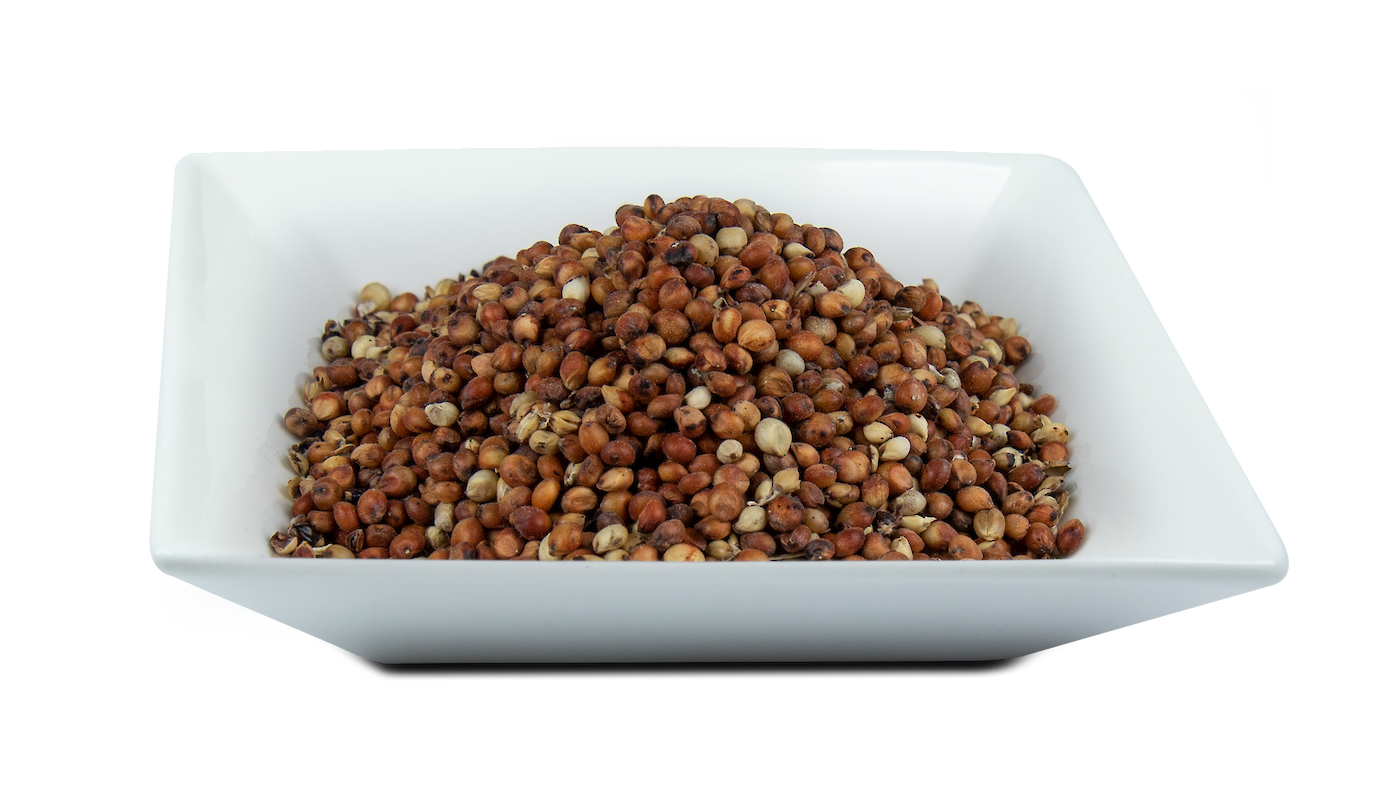
The unhusked sorghum varieties (also known as milocorn or sorghum millet) are used as feed in pig nutrition. These sorghum varieties differ little from grain corn in their nutrient composition and feed energy value. As an unhusked cereal, sorghum is low in crude fiber. It is therefore recommended to supplement the ration with a fiber carrier (e.g. deuka Fasermix). The low crude fiber content and high digestibility result in a high energy feed value, which is on a par with corn. Unlike corn, however, sorghum contains fewer unsaturated fatty acids, which reduces the risk of fat quality impairment.
Of the cereals presented, sorghum has the lowest lysine content. Therefore, the biological value of the cereal protein is very low. For this reason, it is advisable to compensate for this with a high-protein supplementary feed for piglets, sows and fattening pigs. The digestible phosphorus (vP) content is also lowest in sorghum. This is due on the one hand to the low content of native phosphorus and on the other to the plant's own phytase activity, which is virtually non-existent.
However, the tannins contained in sorghum must be taken into account in ration planning. These plant tannins have an antinutritive effect and reduce digestibility. The tannin content varies depending on the variety. New varieties generally contain only small amounts of tannin. However, due to possible fluctuations, restrictions on use in pig feed are necessary.
Corn is used in pig feeding mainly in the form of grain corn as whole-grain silage and corn-cob mix (CCM). Both feeds have high acceptance among pigs. Together with sorghum, grain corn has the highest starch content of all cereals. The low crude fiber content of the unhusked grain results in its high digestibility and high energetic value.
Grain corn - like oats - is particularly rich in crude fat: the fat fraction in corn is about twice as high as that in wheat, triticale or rye. Since the fat fraction of corn contains high levels of unsaturated fatty acids, farm managers should limit the ration content in pig fattening to 40%; after all, too high an intake can negatively affect the fat quality of the carcass.
Of all cereals, corn has the lowest crude protein content. At the same time, the biological value of the protein is low. The reason for this is the low lysine content. In this respect, corn is similar to sorghum. Supplementation with a high-protein feed supplement adapted to the amino acid pattern of corn (e.g. all-round corn kernel), or a combination of protein carriers such as optiraps® or soybean meal with a suitable mineral feed (e.g. deukaMin Mast 12 N/P) is therefore recommended for pig fattening.
Corn is also the cereal with the lowest digestible phosphorus (vP) content. This is due to both the low native phosphorus content and the scarcity of the plant's own phytase activity. However, ensiling corn in the form of whole-grain silage or corn-cob mix (CCM) can significantly improve phosphorus availability: However, for mixtures with high proportions of non-silaged corn cob products, it is recommended to mix in a supplemental feed with a readily available phosphorus source (e.g., all-round corn grain). Mineral phosphorus is particularly suitable for this purpose.
CCM as a corn grain/spindle mixture is a starch-rich feedstuff of similar quality to grain corn, since the proportion of co-harvested spindles has been greatly reduced in recent years. The low average crude fiber contents of 2.6-2.8% in dry matter (DM) make it clear that the term "grain corn silage" is often more accurate than the classic definition of CCM silage.
Because of their high digestibility and low crude fiber content, grain corn and CCM are suitable feeds for piglets, lactating sows, and finishing pigs. In mixtures for pregnant sows, you should limit the proportion in the ration to 20% due to the low crude fiber content.
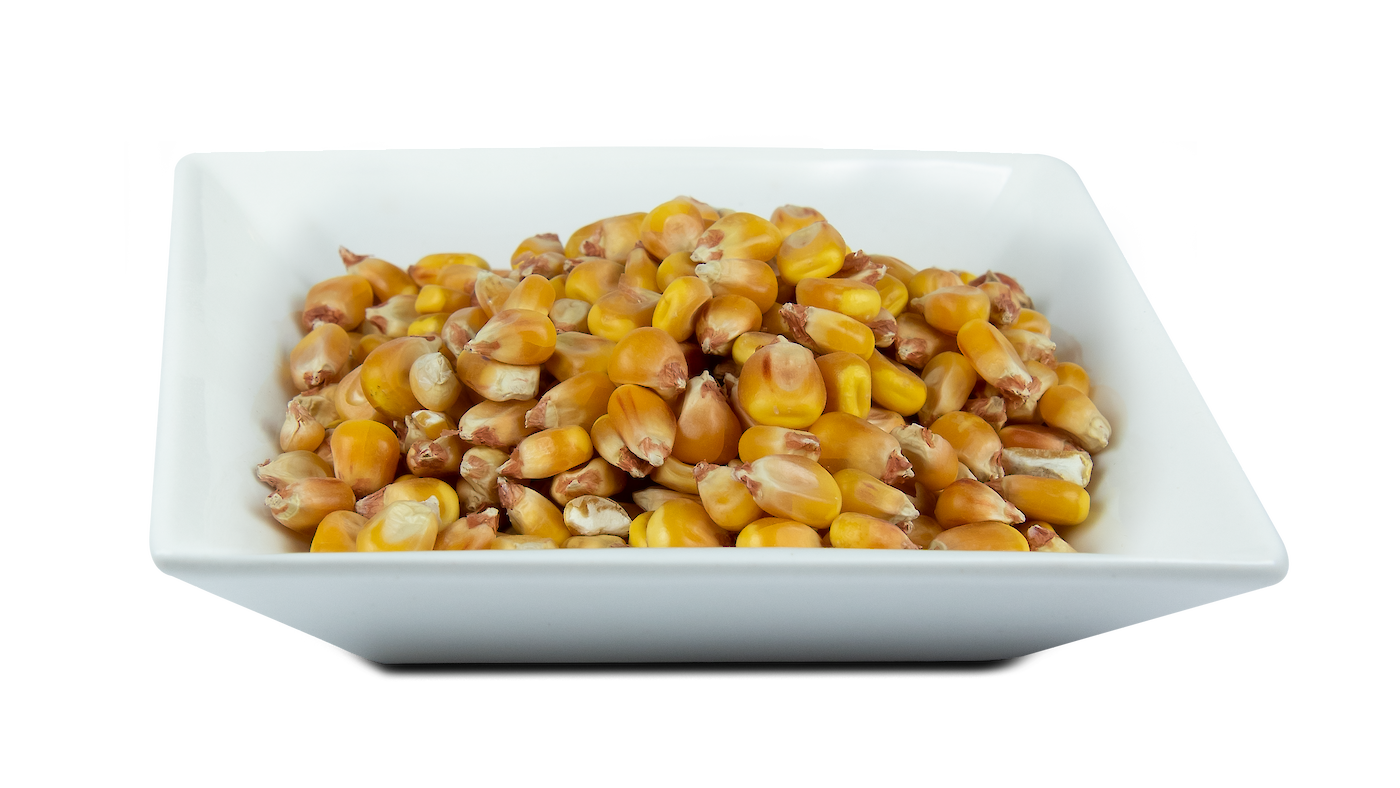
Maximum use limits of cereals in feed mixtures for ...
Proportion of praecaecal digestible amino acids and digestible phosphorus in feed grains
What are non-starch polysaccharides?
Non-starch polysaccharides (NSP) are a group of carbohydrates. They are a component of some feed grains (e.g. rye and triticale). Pigs do not possess endogenous enzymes for their digestion. NSP can lower the energy concentration in the feed and bind highly digestible ingredients such as protein and starch. This is also known as the "cage effect." Especially in younger pigs, NSP also increase the viscosity of the feed slurry, reducing the passage rate of the feed. Especially when feeding young and growing pigs with rye and triticale containing NSP, it is therefore recommended to add NSP-cleaving enzymes to the ration. Various supplementary feeds for piglets, sows and fattening pigs are available for this purpose.
Older pigs, on the other hand, have a higher capacity for fiber fermentation in the large intestine and can thus make positive use of NSP. These animals Can ferment NSP into short-chain fatty acids, which exert a stabilizing effect on the intestinal barrier and nourish the desired intestinal flora. Short-chain fatty acids also regulate the pH value in the large intestine, which has a growth-inhibiting effect on pathogens (e.g. salmonella).
Use of cereals in the ration - analyze first.
A needs-based supply of pigs requires precise knowledge of the ingredient profiles of the components used. The feed value tables of the German Agricultural Society (DLG) do provide an overview of the ingredients of the cereals mentioned and thus offer an orientation aid. However, table values are unsuitable as a basis for ration calculation. After all, various environmental factors such as weather conditions during the growing season (temperature, precipitation), soil quality and fertilizer application have a far-reaching influence on the nutrient composition of the grain. Genetic factors also have an impact on the constituent profiles of forage crops.
Misconceptions are therefore likely to arise from an exclusive orientation to average values that do not reflect the actual contents of one's own forages (cf. ration example below). If the actual nutrient contents are higher than the orientation values used, this can lead, for example, to luxury consumption that is expensive for the farm. Pig farmers buy protein carriers unnecessarily, which places an unnecessary financial burden on the farm. Another consequence is avoidable environmental pollution due to increased nutrient excretion by the pigs, which occurs because the actual nutrient content was underestimated by orientation to guide values.
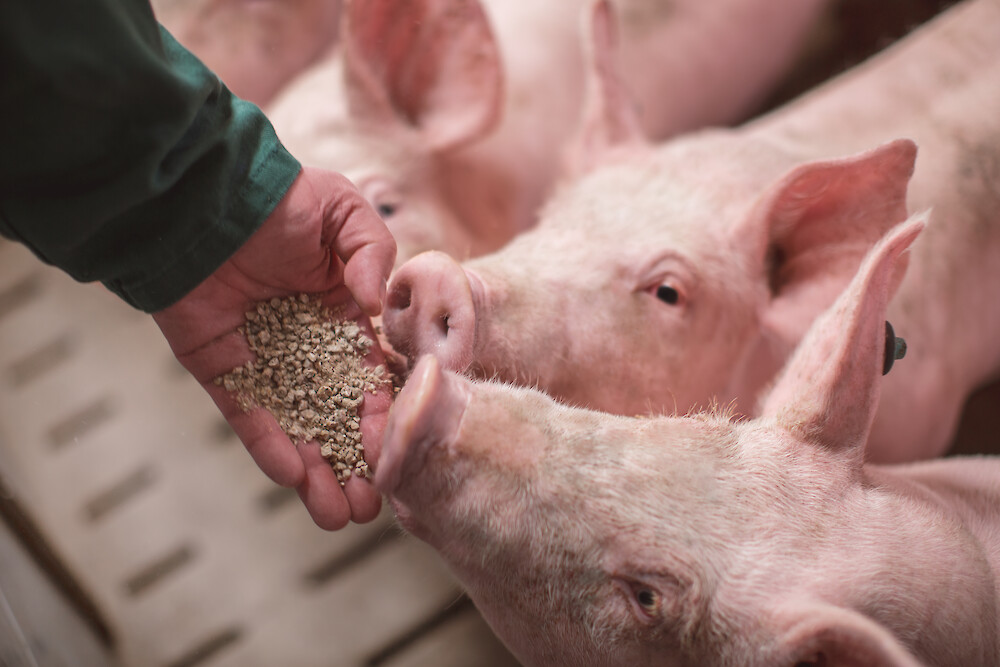
Do not feed feed grain immediately!
Pig farmers should not feed freshly harvested grain. To avoid serious digestive disorders, it is recommended to store the grain for about four weeks. In sows, fertility problems are also a possible consequence of feeding too early. The reasons for this are the high levels of surface germs in freshly harvested grain.
During post-ripening, ingredients such as starch and protein undergo "aging." This process is positive for utilization by pigs: their degradation in the stomach and intestines of the pigs is subsequently slower and ultimately more complete.
Not without protein-rich supplements: Ration design with the farm's own cereals.
For targeted feeding and optimization of the farm's own mixtures for piglets, sows or fattening pigs, a precise analysis of the ingredients of the grain to be fed is therefore essential. With the LUFA analysis tool, you can analyze your farm's own feed quickly, conveniently and cost-effectively. This lays the foundation for an optimized farm-specific ration calculation. However, more is needed to obtain a nutrient-optimized ration. This requires additional feeding with a protein-rich supplementary feed for piglets, sows or fattening pigs. The choice should be made depending on the farm's own cereals and the amount of each cereal available.
Ration example: effects of nutrient fluctuations in cereals
Cereals - Harvest 2021* |
Ingredients and energy content Mean values |
|
|
|
Barley | Wheat |
| Crude protein (%)** |
7.6–12.2 |
8.6–11.9 |
| ME pig (MJ/kg)** |
12.2–13.0 |
13.7–14.1 |
| Lysine (%)** |
0.29–0.41 |
0.27–0.32 |
* Calculation based on preliminary surveys for the 2021 harvest by LUFA North-West.
** In each case based on a dry matter of 88 %.
| Components (share of ration) |
Lower limit* |
Upper limit* |
|
deuka combisan Tragemix (%) |
30 |
30 |
| Barley (%) |
45 |
45 |
| Wheat (%) |
25 |
25 |
| Selected ingredients |
|
|
| Crude protein (%) |
11.6 |
14.5 |
| Lysine (%) |
0.63 |
0.69 |
| Energy (MJ ME/kg) |
11.6 |
12.1 |
* Always related to the values of the LUFA examination..
Conclusion - Cereals as feedstuffs for pigs
- Cereals have a special importance in the nutrition of piglets, sows and fattening pigs.
- Wheat, barley, rye, triticale, oats, corn and sorghum are among the most common cereals used in pig feeding in Germany.
- All cereals have different profiles of nutrients or ingredients. These play an important role in the production of on-farm feed mixtures.
- The use of cereals in feed mixtures for pigs requires prior, precise analysis (e.g. with the aid of the LUFA analysis tool) - an exclusive orientation to table values sometimes leads to unnecessary luxury consumption by the pigs.
Further links
- Article "Evaluation on cereals of the 2020 harvest" on the LUFA North-West website.
Contact person

Downloads
Documents
Contact person


